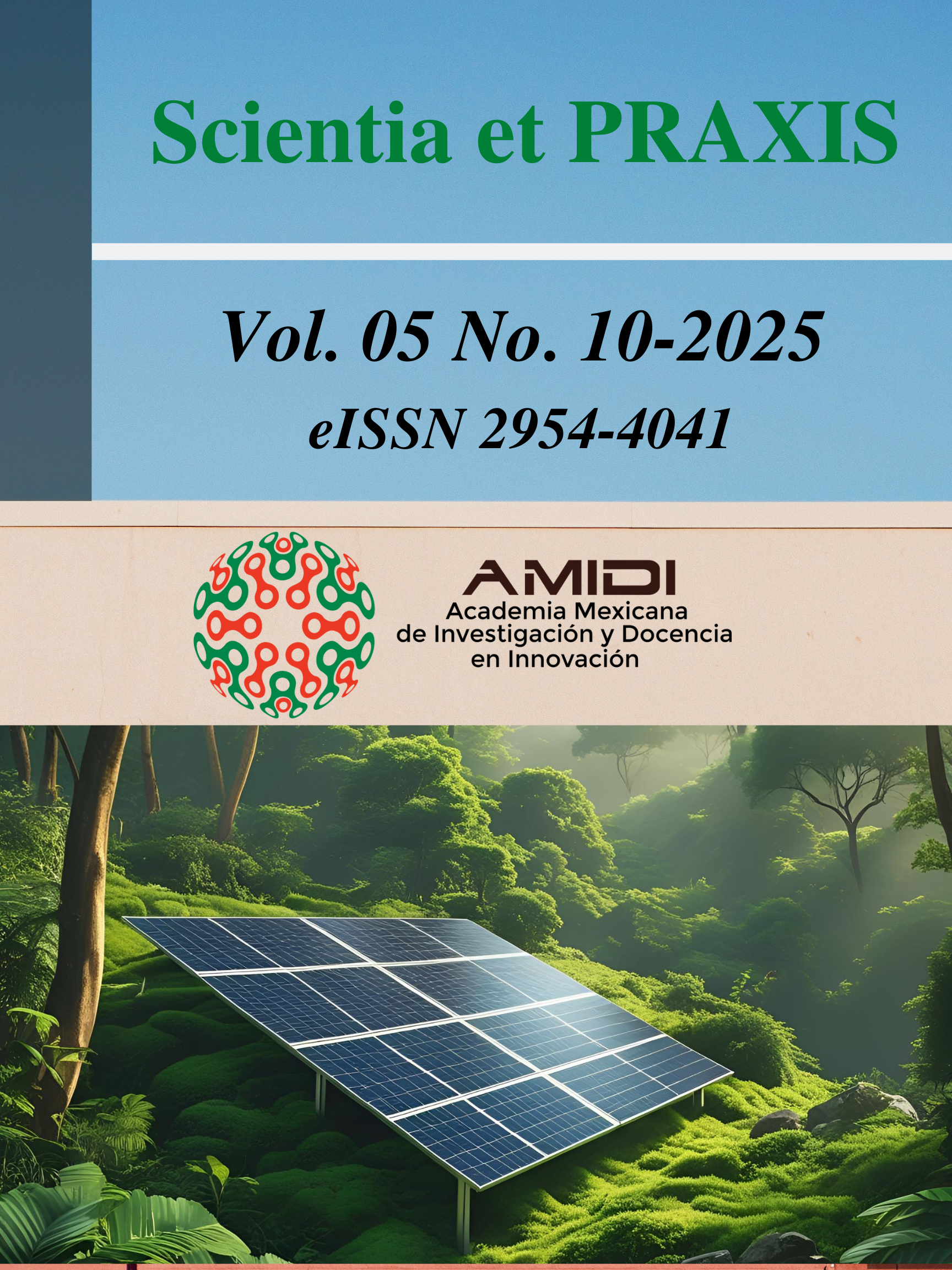Inclusive Innovation in Higher Education: Evidence on Entrepreneurship and Sexual Diversity
DOI:
https://doi.org/10.55965/setp.5.10.a3Keywords:
entrepreneurial intention, sexual diversity, resources access, innovationAbstract
Context. Higher-education entrepreneurship in Mexico operates amid unequal resource access and bias against sexual minorities. Universities pursue SDG-aligned inclusion, evidence on LGBTQ+ entrepreneurship remains scarce. This study examines whether such gaps affect students´ entrepreneurial intention (EI).
Problem. Scholarship often assumes that discrimination and weak support networks reduce EI among sexual minorities, while resource access offsets these barriers. This study asks: Does sexual orientation predict EI among Mexican university students, and do perceived discrimination, support networks, and access to resources moderate that relationship?
Purpose. The research integrated entrepreneurship, gender and diversity studies, and education policy to inform Oslo-aligned social innovations in higher-education ecosystems and advance SDGs 4, 5, 8, and 10.
Methodology. A cross-sectional survey was conducted with 477 undergraduates at the University of Guadalajara (Mexico) between January and March 2025. Instruments included an entrepreneurial intention scale and measures of perceived discrimination, support networks, and access to resources. All instruments showed adequate reliability and validity. Analyses in R included descriptive statistics, exploratory factor analysis, Welch’s t-test, and multiple regression models with interactions.
Theoretical and Practical Findings. Results showed no significant differences in EI by sexual orientation. Moderation effects were no significant, but access to resources had a positive direct effect. Theoretically, the study nuances identity-based assumptions by foregrounding resource availability. Practically, it supports social innovations in universities to widen access, and reduce bias.
Originality The study bridges entrepreneurship, gender studies, and education design to promote social innovations that advance SDGs 4/5/8/10.
Conclusions and limitations. EI is equivalent across sexual orientations, while resource access emerges as a lever for action. Limits include a single institution and cross-sectional design; future research should be multi-site and longitudinal, include behavioral outcomes and intersectional analyses, and test inclusive program designs in the field.
Downloads
References
Aguilar-Rosado & Campos-Sanchez (2024). Necesidad y oportunidad” como motivaciones para el emprendimiento femenino en Latinoamérica. Scientia et PRAXIS, 4(7), 31-57. https://doi.org/10.55965/setp.4.07.a2 DOI: https://doi.org/10.55965/setp.4.07.a2
Ajzen, I. (1991). The theory of planned behavior. Organizational Behavior and Human Decision Processes, 50(2), 179–211. https://doi.org/10.1016/0749-5978(91)90020-T DOI: https://doi.org/10.1016/0749-5978(91)90020-T
Backman, M., Carpenter, C., Dujeancourt, E., & Mann, S. (2024). Sexual orientation, entrepreneurship, and firm survival. Small Business Economics. https://doi.org/10.1007/s11187-024-00976-2 DOI: https://doi.org/10.1007/s11187-024-00976-2
Barba-Sánchez, V., Mitre-Aranda, M., & del Brio-González, J. (2022). The entrepreneurial intention of university students: An environmental perspective. European Research on Management and Business Economics, 28(2), Article 100184. https://doi.org/10.1016/j.iedeen.2021.100184 DOI: https://doi.org/10.1016/j.iedeen.2021.100184
Bourdieu, P. (1986). The forms of capital. In J. Richardson (Ed.), Handbook of Theory and Research for the Sociology of Education (pp. 241–258). Greenwood Press. https://home.iitk.ac.in/~amman/soc748/bourdieu_forms_of_capital.pdf
Byington, E., Tamm, G., & Trau, R. (2020). Mapping sexual orientation research in management: A review and research agenda. Human Resource Management, 60(1), 31–53. https://doi.org/10.1002/hrm.22026 DOI: https://doi.org/10.1002/hrm.22026
Cavalcanti, A., & Ferreira, J. (2022). The entrepreneurial orientation of LGBT Brazilian start-ups: Context and antecedents. Strategic Change, 31(4), 415–425. https://doi.org/10.1002/jsc.2512 DOI: https://doi.org/10.1002/jsc.2512
Cavalcanti, A., Ferreira, J., Mota, P., Dabic, M., & Meyer, N. (2024). A comparative study of minority entrepreneurship: Entrepreneurial intention between LGBT versus traditional markets. International Journal of Entrepreneurial Behavior & Research, 30(11), 181–204. https://doi.org/10.1108/IJEBR-08-2023-0869 DOI: https://doi.org/10.1108/IJEBR-08-2023-0869
Conti, R., Kacperczyk, O., & Valentini, G. (2021). Institutional protection of minority employees and entrepreneurship: Evidence from the LGBT Employment Non-Discrimination Acts. Strategic Management Journal, 43(4), 758–791. https://doi.org/10.1002/smj.3340 DOI: https://doi.org/10.1002/smj.3340
Deloitte. (2024). Women @ Work 2024: A Global Outlook. Deloitte Global. https://www.deloitte.com/global/en/issues/work/content/women-at-work-global-outlook.html
Díaz-González, A., & Dentchev, N. (2021). Ecosystems in support of social entrepreneurship: A systematic review. Social Enterprise Journal, 17(3), 329–360. https://doi.org/10.1108/SEJ-08-2020-0064 DOI: https://doi.org/10.1108/SEJ-08-2020-0064
DiMaggio, P., & Powell, W. (2004). Chapter 4: The iron cage revisited: Institutional isomorphism and collective rationality in organizational fields. In F. Dobbin (Ed.), The New Economic Sociology: A Reader (pp. 111–134). Princeton University Press. https://doi.org/10.1515/9780691229270-005 DOI: https://doi.org/10.1515/9780691229270-005
Doan Van, E., Mereish, E., Woulfe, J. M., & Katz-Wise, S. (2019). Perceived discrimination, coping mechanisms, and effects on health in bisexual and other non-monosexual adults. Archives of Sexual Behavior, 48, 159–174. https://doi.org/10.1007/s10508-018-1254-z DOI: https://doi.org/10.1007/s10508-018-1254-z
Essers, C., Heijden, B., Fletcher, L., & Pijpers, R. (2022). It’s all about identity: The identity constructions of LGBT entrepreneurs from an intersectionality perspective. International Small Business Journal: Research Entrepreneurship, 41(7), 774–795. https://doi.org/10.1177/02662426221128464 DOI: https://doi.org/10.1177/02662426221128464
Frost, D., Lehavot, K., & Meyer, I. (2015). Minority stress and physical health among sexual minority individuals. Journal of Behavioral Medicine, 38(1), 1–8. https://doi.org/10.1007/s10865-013-9523-8 DOI: https://doi.org/10.1007/s10865-013-9523-8
Germon, R., Leloarne, S., Safraou, I., & Maalaoui, A. (2018). The role of sexual orientation in entrepreneurial intention: The case of Parisian LGB people. Journal of Organizational Change Management, 33(3), 527–544. https://doi.org/10.1108/JOCM-12-2018-0365 DOI: https://doi.org/10.1108/JOCM-12-2018-0365
Ghi, T., Nguyen, T., Nguyen, L., & Nguyen, A. D. (2024). Social capital and entrepreneurial performance of SMEs: The mediating role of access to entrepreneurial resources. Management Systems in Production Engineering, 32(1), 45–53. https://doi.org/10.2478/mspe-2024-0005 DOI: https://doi.org/10.2478/mspe-2024-0005
Heeks, R., Foster, C. & Nugroho, Y. (2014). New Models of inclusive innovation for development. Innovation and Development, 4(2), 175-185. https://doi.org/10.1080/2157930X.2014.928982 DOI: https://doi.org/10.1080/2157930X.2014.928982
HRC (2024). HRC EQUIDAD MX 2024. Evaluación de empresas empleadoras en equidad para personas Lesbianas, Gays, Bisexuales, Trans y Queer. https://hrc-prod-requests.s3-us-west-2.amazonaws.com/HRC-Equidad-Mexico-2024-FNL.pdf
INEGI (2022). Encuesta Nacional sobre Diversidad Sexual y de Género (ENDISEG) (Comunicado de prensa núm 340/22). Instituto Nacioanal de Estadistica y Geografia. https://www.inegi.org.mx/contenidos/saladeprensa/boletines/2022/endiseg/Resul_Endiseg21.pdf
INEGI (2023). Estadísticas a propósito del día internacional del orgullo LGBTI. Comunicado de prensa núm 375/23). Instituto Nacioanal de Estadistica y Geografia. https://www.inegi.org.mx/contenidos/saladeprensa/aproposito/2023/EAP_LGBTI23.pdf
Karimi, S., Biemans, H. J. A., Lans, T., Chizari, M., & Mulder, M. (2016). The impact of entrepreneurship education: A study of Iranian students’ entrepreneurial intentions and opportunity identification. Journal of Small Business Management, 54(1), 187–209. https://doi.org/10.1111/jsbm.12137 DOI: https://doi.org/10.1111/jsbm.12137
Kautonen, T., van Gelderen, M., & Fink, M. (2015). Robustness of the theory of planned behavior in predicting entrepreneurial intentions and actions. Entrepreneurship Theory and Practice, 39(3), 655–674. https://doi.org/10.1111/etap.12056 DOI: https://doi.org/10.1111/etap.12056
Kinsey, A. C., Pomeroy, W. B., & Martin, C. E. (1948). Sexual behavior in the human male. W.B. Saunders. https://www.jstor.org/stable/j.ctt173zmh5
LGBT Capital (2023). Estimated LGBT Purchasing Power: LGBT-GDP - data as of year-end 2022. https://www.lgbt-capital.com/docs/Estimated_LGBT-GDP_%28table%29_-_2023.pdf
LGBT Capital (2025). LGBT Market Statics (Blog). https://www.lgbt-capital.com/index.php?menu_id=2
Liñán, F., & Chen, Y. W. (2009). Development and cross–cultural application of a specific instrument to measure entrepreneurial intentions. Entrepreneurship Theory and Practice, 33(3), 593–617. https://doi.org/10.1111/j.1540-6520.2009.00318.x DOI: https://doi.org/10.1111/j.1540-6520.2009.00318.x
Liu, X., Lin, C., Zhao, G., & Zhao, D. (2019). Research on the effects of entrepreneurial education and entrepreneurial self-efficacy on college students’ entrepreneurial intention. Frontiers in Psychology, 10, Article 869. https://doi.org/10.3389/fpsyg.2019.00869 DOI: https://doi.org/10.3389/fpsyg.2019.00869
Looi, K., & Khoo-Lattimore, C. (2015). Undergraduate students’ entrepreneurial intention: Born or made? International Journal of Entrepreneurship and Small Business, 26(1), 1–20. https://doi.org/10.1504/IJESB.2015.071317 DOI: https://doi.org/10.1504/IJESB.2015.071317
Lv, Y., Chen, Y., Sha, Y., Wang, J., An, L., Chen, T., Huang, X., Huang, Y., & Huang, L. (2021). How entrepreneurship education at universities influences entrepreneurial intention: Mediating effect based on entrepreneurial competence. Frontiers in Psychology, 12, Article 655868. https://doi.org/10.3389/fpsyg.2021.655868 DOI: https://doi.org/10.3389/fpsyg.2021.655868
Marlow, S., Greene, F., & Coad, A. (2018). Advancing gendered analyses of entrepreneurship: A critical exploration of entrepreneurial activity among gay men and lesbian women. British Journal of Management, 29(1), 118–135. https://doi.org/10.1111/1467-8551.12221 DOI: https://doi.org/10.1111/1467-8551.12221
Mei, H., Lee, C. & Xiang, Y. (2020). Entrepreneurship Education and Students’Entrepreneurial Intention in Higher Education. Education Sciences, 10(9). https://doi.org/10.3390/educsci10090257 DOI: https://doi.org/10.3390/educsci10090257
Miller, J., & Parker, L. (2025). Open for Business Strengthening the economic case. Open for Business. https://static1.squarespace.com/static/5bba53a8ab1a62771504d1dd/t/5d40964b36f8640001cd3a86/1564513872720/Open+For+Business_Full+Report.pdf
Neneh, B. (2022). Entrepreneurial passion and entrepreneurial intention: The role of social support and entrepreneurial self-efficacy. Studies in Higher Education, 47(3), 587–603. https://doi.org/10.1080/03075079.2020.1770716 DOI: https://doi.org/10.1080/03075079.2020.1770716
OECD/Eurostat (2018). Oslo Manual 2018: Guidelines for Collecting, Reporting and Using Data on Innovation, 4th Edition, The Measurement of Scientific, Technological and Innovation Activities. OECD Publishing. https://doi.org/10.1787/9789264304604-en DOI: https://doi.org/10.1787/9789264304604-en
Ozkazanc-Pan, B., & Muntean, S. (2018). Networking towards (in)equality: Women entrepreneurs in technology. Gender, Work & Organization, 25(4), 379–400. https://doi.org/10.1111/gwao.12225 DOI: https://doi.org/10.1111/gwao.12225
Pulcher, S., Guerci, M., & Köllen, T. (2019). Unions as institutional entrepreneurs: The contribution of unions to the diffusion and adaptation of LGBT diversity initiatives. Journal of Organizational Change Management, 33(3), 477–490. https://doi.org/10.1108/JOCM-11-2018-0332 DOI: https://doi.org/10.1108/JOCM-11-2018-0332
Ríos, A. (2024). Prólogo. In A. Campos, G. Zápari, R. Martínes & E. Marúm (Coord). Innovación y emprendimiento para el desarrollo sostenible (pp. 6-13). Exponencial editorial. https://doi.org/10.55965/abib.9786076998731 DOI: https://doi.org/10.55965/abib.9786076998731
Saeed, S., Yousafzai, S. Y., Yani-De-Soriano, M., & Muffatto, M. (2015). The role of perceived university support in the formation of students’ entrepreneurial intention. Journal of Small Business Management, 53(4), 1127–1145. https://doi.org/10.1111/jsbm.12090 DOI: https://doi.org/10.1111/jsbm.12090
Schindehutte, M., Morris, M., & Allen, J. (2005). Homosexuality and entrepreneurship: Implications of gay identity for the venture-creation experience. The International Journal of Entrepreneurship and Innovation, 6(1), 27–40. https://doi.org/10.5367/0000000053026374 DOI: https://doi.org/10.5367/0000000053026374
Stam, E. (2015). Entrepreneurial Ecosystems and Regional Policy: A Sympathetic Critique. European Planning Studies, 23(9), 1759-1769. https://doi.org/10.1080/09654313.2015.1061484 DOI: https://doi.org/10.1080/09654313.2015.1061484
Tomy, S., & Pardede, E. (2020). An entrepreneurial intention model focusing on higher education. International Journal of Entrepreneurial Behavior & Research, 26(7), 1423–1447. https://doi.org/10.1108/IJEBR-06-2019-0370 DOI: https://doi.org/10.1108/IJEBR-06-2019-0370
Uddin, M., & Bose, T. K. (2012). Determinants of entrepreneurial intention of business students in Bangladesh. International Journal of Business and Management, 7(24), 128–137. http://doi.org/10.5539/ijbm.v7n24p128 DOI: https://doi.org/10.5539/ijbm.v7n24p128
Wegner, D., Thomas, E., Teixeira, E., & Maehler, A. (2020). University entrepreneurial push strategy and students’ entrepreneurial intention. International Journal of Entrepreneurial Behavior & Research, 26(2), 307–325. https://doi.org/10.1108/IJEBR-10-2018-0648 DOI: https://doi.org/10.1108/IJEBR-10-2018-0648
Yukongdi, V., & Lopa, N. (2017). Entrepreneurial intention: A study of individual, situational and gender differences. Journal of Small Business and Enterprise Development, 24(2), 333–352. https://doi.org/10.1108/JSBED-10-2016-0168 DOI: https://doi.org/10.1108/JSBED-10-2016-0168
Published
How to Cite
Issue
Section
License
Copyright (c) 2025 Aurora Araceli Carbajal-Silva, Pedro Daniel Aguilar-Cruz

This work is licensed under a Creative Commons Attribution-NonCommercial 4.0 International License.











